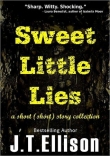
Текст книги "The James Bond Anthology"
Автор книги: Ian Fleming
Жанр:
Шпионские детективы
сообщить о нарушении
Текущая страница: 153 (всего у книги 190 страниц)
7 | THE DEATH COLLECTOR
James Bond smiled at this dramatic utterance. ‘A collector of death? You mean he kills people?’
‘No, Bondo-san. It is not as simple as that. He persuades, or rather entices people to kill themselves.’ Tiger paused, the wide expanse of his brow furrowed. ‘No, that also is not being just. Let us just say that he provides an easy and attractive opportunity – a resort – for people to do away with themselves. His present tally, in just under six months, is something over five hundred Japanese.’
‘Why don’t you arrest him, hang him?’
‘Bondo-san, it is not as easy as that. I had better begin at the beginning. In January of this year, there entered the country, quite legally, a gentleman by the name of Doctor Guntram Shatterhand. He was accompanied by Frau Emmy Shatterhand, born de Bedon. They had Swiss passports and the doctor described himself as a horticulturalist and botanist specializing in subtropical species. He carried high references from the Jardin des Plantes in Paris, Kew Gardens, and other authorities, but these were couched in rather nebulous terms. He quickly got in touch with the equivalent authorities in Japan and with experts in the Ministry of Agriculture, and these gentlemen were astonished and delighted to learn that Doctor Shatterhand was prepared to spend no less than one million pounds on establishing an exotic garden or park in this country which he would stock with a priceless collection of rare plants and shrubs from all over the world. These he would import at his own expense in a sufficient state of maturity to allow his park to be planted with the minimum of delay – an extremely expensive procedure if you know anything about horticulture.’
‘I know nothing about it. Like the Texan millionaires who import fully-grown palms and tropical shrubs from Florida?’
‘Exactly. Well, the park was not to be open to the public, but would be freely available for study and research work by authorized Japanese experts. All right. A wonderful offer that was enthusiastically accepted by the government, who, in return, granted the good doctor a ten-year residence permit – a very rare privilege. Meanwhile, as a matter of routine, the Immigration authorities made inquiries about the doctor through my department. Since I have no representative in Switzerland, I referred the matter to our friends of the C.I.A., and in due course he was given complete clearance. It appeared that he was of Swedish origin and was not widely known in Switzerland, where he only possessed the minimum requirement for residential status in the shape of two rooms in an apartment block in Lausanne. But his financial standing with the Union de Banques Suisses was Grade One, which I understand requires you to be a millionaire many times over. Since money is almost the unique status symbol in Switzerland, his clearance by the Swiss was impeccable, though no information could be obtained about his standing as a botanist. Kew and the Jardin des Plantes, on inquiry, referred to him as an enthusiastic amateur who had made valuable contributions to these institutions in the form of tropical and sub-tropical species collected for him by expeditions which he had financed. So! An interesting and financially sound citizen whose harmless pursuits would be of some benefit to Japan. Yes?’
‘Sounds like it.’
‘After travelling round the country in great style, the doctor took a fancy to a semi-ruined castle in Kyūshū, our southern island. The castle was in an extremely remote corner of the coast not far from Fukuoka, the principal prefecture of the island, and in ancient times it had been one of a line of castles facing the Tsushima Straits, the scene of the famous defeat of the Russian navy. These castles were originally designed to repel attacks from the Korean mainland. Most of them had fallen into disrepair, but the one chosen by the doctor was a giant edifice that had been occupied until the last war by a rich and eccentric family of textile millionaires, and its monumental surrounding wall was just what the doctor required for the privacy of his undertaking. An army of builders and decorators moved in. Meanwhile, the plants ordered by the doctor began arriving from all over the world and, with a blanket customs clearance from the Ministry of Agriculture, they were planted in appropriate soils and settings. Here I should mention that an additional reason for the doctor’s choice of site was that the property, which extends for some five hundred acres, is highly volcanic and furnished with many geysers and fumaroles, which are common in Japan. These would provide, all the year round, the temperature needed for the successful propagation of these tropical shrubs, trees and plants from the equatorial zones. The doctor and his wife, who is by the way extremely ugly, moved into the castle with all speed and set about recruiting staff in the neighbourhood who would look after the establishment and its grounds.’ Here Tiger assumed his sorrowful face. ‘And it was at this time that I should not have dismissed as fanciful certain reports that reached me from the Chief of Police at Fukuoka. These were to the effect that the doctor was recruiting his staff uniquely from former members of the Black Dragon Society.’
‘And what might that be?’
‘Have been,’ Tiger corrected him. ‘The Society was officially disbanded before the war. But in its heyday it was the most feared and powerful secret society in Japan. It consisted originally of the dregs of the sōshi – the unemployed samurai who were left high and dry after the Meiji Restoration of about a hundred years ago – but it later recruited terrorists, gangsters, Fascist politicos, cashiered officers from the navy and army, secret agents, soldiers of fortune and other riff-raff, but also big men in industry and finance, and even the occasional Cabinet Minister who found Black Dragon support of much practical value when dirty work had to be done. And the odd thing is, though it does not seem so odd to me today, that the doctor should have chosen his site, leaving out its practical amenities, in just that corner of Japan that used to be the headquarters of the Black Dragons and has always been a hotbed of extremists. Toyama Mitsuru, the former head of the Black Dragons, came from Fukuoka; so did the anarchist Hirota, and Nakano, leader of the former Tohokai, or Fascist group, in the Diet. It has always been a nest of scoundrels, this district, and it remains so today. These extreme sects never die out completely, as you have recently, my dear Bondo-san, found in the resurgence of the Black Shirts in England, and this Doctor Shatterhand found no difficulty in collecting some twenty extremely tough and dangerous characters around him, all most correctly clothed as servants and gardeners and, no doubt, perfectly good at their ostensible jobs. On one occasion the Prefect of Police thought it his duty to make a courtesy call and give his distinguished inhabitant a word of caution. But the doctor dismissed the matter on the grounds that competent guards would be necessary to maintain his privacy and keep trespassers away from his valuable collection of plants. This seemed reasonable enough, and anyway the doctor appeared to be under high patronage in Tokyo. The Prefect bowed himself out, much impressed with the lavish display of wealth in evidence in the heart of his poor province.’
Tiger Tanaka paused and poured more saké for Bond and more Suntory for himself. Bond took the opportunity to ask just how dangerous this Black Dragon Society had really been. Was it the equivalent of the Chinese tongs?
‘Much more powerful. You have heard of the Ching-Pang and Hung-Pang tongs that were so much feared in China in the days of the Kuomintang. No? Well the Black Dragons were a hundred times worse. To have them on your heels was certain death. They were totally ruthless, and not out of any particular political conviction. They operated strictly for cash.’
‘Well, under this doctor from Switzerland, have they done any harm yet?’
‘Oh no. They are nothing more than he says – personal staff, at the worst, if you like, a bodyguard. No. The trouble is quite different, much more complex. You see, this man Shatterhand has created what I can only describe as a garden of death.’
Bond raised his eyebrows. Really, for the head of a national secret service, Tiger’s metaphors were almost ridiculously dramatic.
Tiger exploded his golden smile. ‘Bondo-san, I can see from your face that you think I am either drunk or mad. Now listen. This Doctor Shatterhand has filled this famous park of his uniquely with poisonous vegetation, the lakes and streams with poisonous fish, and he has infested the place with snakes, scorpions and poisonous spiders. He and this hideous wife of his are not harmed by these things, because whenever they leave the castle he wears full suits of armour of the seventeenth century, and she wears some other kind of protective clothing. His workers are not harmed because they wear rubber boots up to the knee, and maskos, that is, antiseptic gauze masks such as many people in Japan wear over the mouth and nose to avoid infection or the spreading of infection.’
‘What a daft set-up.’
Tiger reached into the folds of the yukata he had changed into when they entered the house. He brought out several sheets of paper pinned together. He handed them over to Bond and said, ‘Be patient. Do not judge what you do not understand. I know nothing of these poisonous plants. Nor, I expect, do you. Here is a list of those that have so far been planted by this doctor, together with comments by our Ministry of Agriculture. Read it. Take your time. You will be interested to learn what charming vegetation grows on the surface of the globe.’
Bond took the papers. The first page was a general note on vegetable poisons. There followed an annotated list. The papers bore the seal of the Ministry of Agriculture. This is what he read:
The poisons listed fall into six main categories:
1.
Deliriant
. Symptoms: spectral illusions, delirium; dilated pupils; thirst and dryness; incoordination; then paralysis and spasms.
2.
Inebriant
. Symptoms: excitement of cerebral functions and of circulation; loss of coordination and muscular movements; double vision; then sleep and deep coma.
3.
Convulsivant
. Symptoms: intermittent spasms, from head downwards. Death from exhaustion, usually within three hours, or rapid recovery.
4.
Depressant
. Symptoms: vertigo, vomiting, abdominal pain, confused vision, convulsions, paralysis, fainting, sometimes asphyxia.
5.
Asthenic
. Symptoms: numbness, tingling mouth, abdominal pain, vertigo, vomiting, purging, delirium, paralysis, fainting.
6.
Irritant
. Symptoms: burning pain in throat and stomach, thirst, nausea, vomiting. Death by shock, convulsions or exhaustion; or starvation by injury to throat or stomach.
SPECIMENS LISTED BY CUSTOMS AND EXCISE DEPARTMENT AS IMPORTED BY DOCTOR GUNTRAM SHATTERHAND
Jamaica dogwood, fish-poison tree (Piscidia erythrina)
: Tree, 30 ft. White and blood-coloured flowers. Inebriant. Toxic principle: piscidine. W. Indies.
Nux-vomica tree, poison-nut, crow-fig, kachita (Strychnos nux-vomica
): Tree, 40 ft. Smooth bark, attractive fruits, which have bitter taste. Greenish-white flowers. Seeds most poisonous part. Convulsivant. Toxic principle: strychnine, brucine. S. India, Java.
Guiana poison-tree (Strychnos toxifera
): curare arrow-poison taken from bark. Creeper. Death within one hour from respiratory paralysis. Toxic principles: curare, strychnine, brucine. Guiana.
St Ignatius’s bean (Strychnos Ignatii)
: small tree, seeds yield brucine. Convulsivant. Philippines.
False Upas-tree (Strychnos tieuté)
: large climbing shrub. Strychnine or brucine from leaf, seed, stem or root-bark. Java.
East Indian snakewood (Strychnos colubrina)
: climbing tree. Yields strychnine, brucine. Convulsivant. Java, Timor.
Ipecacuanha (Psychotria ipecacuanha)
: shrubby plant. Depressant. Toxic principle: emetine, from root. Brazil.
White-woolly Kombe bean, Gaboon arrow poison (Stropanthus hispidus)
: woody climber, 6 ft. Toxic principle: strophanthin, incine. Asthenic. W. Africa.
Ordeal-tree, poison tanghin (Tanghinia venenifera or cerbera tanghin)
: small evergreen tree, 20 ft. Fruit purplish, tinged with green. Toxic principle: tanghinine, cerberin. Asthenic. Madagascar.
Upas-tree, Malay arrow-poison tree (Antiaris toxicaria)
: jungle tree–100 ft. before branches start. Wood light, white, hard, milk-bearing. Toxic principle: antiarin, from milky sap. Asthenic. Java, Borneo, Sumatra, Philippines.
Poison ivy, trailing poison oak (Rhus toxicodendron)
: climbing shrub. Greenish-yellow flowers. Stem contains milky juice – irritant. Toxic principle: toxicodendrol. U.S.A.
Yellow oleander, campanilla, be-still tree (Thevetia peruviana)
: small tree. All parts can be fatally toxic, particularly fruit. Pulse slows, vomiting, shock. Hawaii.
Castor bean plant (Ricinus communis)
: seeds are source of castor oil, also contain toxic principle, ricin. Harmless if eaten. If it enters the circulation through scratch or abrasion is fatal within 7-10 days. One hundredth of a milligram can kill a 200 lb. man. Loss of appetite, emesis, purgation, delirium, collapse and death. Hawaii, S. America.
Common oleander (Nerium Indicum)
: evergreen shrub. The roots, bark, juice, flowers and leaves all fatally toxic. Acts chiefly on the heart. Used in India as leprosy treatment, abortifacient, means of suicide. India, Hawaii. One death was due to the victim’s having eaten meat cooked over an open fire, spitted on a stick of oleander wood.
Rosary pea, crab’s eye, Jequiritz bean (Abrus precatorius)
: climbing shrub. Small shiny red seeds weigh average 1.75 grains, used by Indian goldsmiths as weights. Seeds are ground down into a paste with a little cold water, made into small pointed cylinders. If these are inserted beneath skin of human or animal death occurs within four hours. India, Hawaii.
Jimson weed (Datura stramonium)
: variety of thorn apple plant, found in N. Africa, India. Also:
Ololiuqui (D. meteloides)
from Mexico, and
D. tatula
from Central and South America. All three are hallucinatory.
D. stramonium’s
apples are smoked by Arabs and Swahilis, leaves eaten by E. African Negroes, seeds added to hashish and leaves to hemp by Bengalese Indians.
D. tatula
was used as a truth-drug by Zapotec Indians in courts of law. Addiction to toloachi, a drink made from
D. tatula
, causes chronic imbecility.
Gloriosa superba
: spectacularly beautiful climbing lily. Roots, stalks, leaves contain an acrid narcotic, superbine, as well as colchicine and choline. Three grains of colchicine are fatal. Hawaii.
Sand-box tree (Hura crepitans)
: whole tree contains an active emetocathartic, used as a fish-poison in Brazil. Also contains crepitin, same group of poisons as ricin. Harmless if swallowed, must be taken into circulation through wound to be fatal. Death comes in 7-10 days. C. and S. America.
Pride-of-India, Chinaberry tree, China tree (Melia azedarach)
: small tree. Beautiful dark-green leaves, lavender blossoms. Fruit contains toxic narcotic which attacks entire central nervous system. Hawaii, C. and S. America.
Physic nut (Jatropha curcas)
: bushy tree. Raw seeds violently purgative, often fatal due to exhaustion. Caribbean.
Mexican tuber, camotillo
: wild potato, grows generally. According to Indian tradition, it is plucked during the waning of the moon; it is alleged to begin deadly action the same number of days after consumption as it was stored after being dug up. Toxic principle: solanine. Central and S. America.
Divine mushroom (Amanita mexicana)
: closely related to European Fly Agaric. Black mushroom, eaten fresh or steeped in warm milk laced with agave spirits. Causes hypersensitivity of the skin surface, ultra-acute hearing and sight, then hallucinations of several hours, followed by deep melancholia. Active principle unknown. Central and S. America.
Bond finished his reading. He handed the papers back. He said, ‘Doctor Shatterhand’s garden is indeed a lovesome thing, God wot.’
‘And you have of course heard of the South American piranha fish? They can strip a whole horse to the bones in less than an hour. The scientific name is Serrasalmus. The sub-species Nattereri is the most voracious. Our good doctor has preferred these fish to our native goldfish for his lakes. You see what I mean?’
‘No,’ said Bond, ‘frankly I don’t. What’s the object of the good doctor’s exercise?’
8 | SLAY IT WITH FLOWERS
It was three o’clock in the morning. The noise of the traffic to Yokohama had died. James Bond didn’t feel tired. He was now totally absorbed in this extraordinary story of the Swiss doctor, who, as Tiger had originally said, ‘collected death’. Tiger wasn’t telling him this bizarre case history for his entertainment. There was going to come a moment of climax. What would that climax be?
Tiger wiped his hand over his face. He said, ‘Did you read a story in the evening edition of the Asahi today? It concerned a suicide.’
‘No.’
‘This was a young student aged eighteen who had failed his examination for the university for the second time. He lived in the suburbs of Tokyo. There was construction work on a new departmento, a department store, going on near where he lived. He went out of his room on to the site. A pile-driver was at work, sinking the foundations. Suddenly this youth broke through the surrounding workmen and, as the pile came crashing down, laid his head on the block beneath it.’
‘What a ghastly business! Why?’
‘He had brought dishonour on his parents, his ancestors. This was his way of expiation. Suicide is a most unfortunate aspect of the Japanese way of life.’ Tiger paused. ‘Or perhaps a most noble one. It depends how you look at it. That boy, and his family, will have gained great face in his neighbourhood.’
‘You can’t gain face from strawberry jam.’
‘Think again, Bondo-san. Your posthumous V.C.s, for instance?’
‘They’re not awarded for committing suicide after failing in an examination.’
‘We are not so demokorasu as you are.’ There was irony in Tiger’s voice. ‘Dishonour must be expunged – according to those of us who remain what you would describe as old-fashioned. There is no apology more sincere than the offering up of your own life. It is literally all you have to give.’
‘But even if this boy failed for the university, he could have gone for a lower standard of examination, for a lower grade of college. As you know, we say “Blast!” or perhaps a stronger word if we fail an examination in Britain. But we readjust our sights, or our parents do it for us, and have another bash. We don’t kill ourselves. It wouldn’t occur to us. It would be dishonourable rather than honourable. It would be cowardly – a refusal to stand up to reverses, to life. And it would give great pain to our parents, and certainly no satisfaction to our ancestors.’
‘With us it is different. And despite demokorasu, the parents of this youth will be rejoicing this evening and their neighbours will be rejoicing with them. Honour is more important to us than life – more proud, more beautiful.’
Bond shrugged. ‘Well, I just think that if the boy had the guts to do this thing, it was the waste of a perfectly good Japanese life. In fact, of course, this suicide business in Japan is nothing more than a form of hysteria – an expression of the streak of violence that seems to run all through the history of Japan. If you hold your own life so cheaply, it follows that you will hold others’ lives even more cheaply. The other day, I saw a traffic accident at one of the main crossings. I don’t know the name of it. It was a multiple affair, and there were bodies all over the place. The police came, but instead of concentrating on getting the wounded to hospital, insisted that they should lie where they were so that they could draw chalk lines round them and photograph them – presumably for use when the case came to court.’
‘That is common practice,’ said Tiger indifferently. ‘We are much over-populated. Abortion is legal. It is helping to solve one of our problems if a few extra people die in an automobile accident. But there is something in what you said earlier. Our word for suicide is jisatsu, literally “self-murder”, and although it is a violent solution to a personal problem, it carries no stigma as it would in your country. In fact, one of our most famous folk-tales, known to all children, is of the forty-seven ronin, or bodyguards. Through their negligence, their lord, Asano, was assassinated. They swore to avenge him and they did so. But then they came together at a place called Ako and all committed seppuku to expiate their negligence. This is what you know as hara-kiri, which is a vulgar term meaning “belly-cutting”. Today, at the time of the festival at the Ako shrine, special trains have to be laid on to accommodate the respectful pilgrims.’
‘Well, if you bring your children up on that sort of stuff, you can’t expect them not to venerate the act of suicide.’
‘Just so,’ said Tiger proudly, ‘25,000 Japanese commit suicide every year. Only the bureaucrats regard that as a shameful statistic. And the more spectacular the suicide, the more warmly it is approved. Not long ago, a young student achieved great renown by trying to saw his own head off. Lovers link hands and throw themselves over the very high Kegon Falls at Nikko. The Mihara volcano on the island of Oshima is another favourite locale. People run down the roasting slope of the crater and hurl themselves, their shoes on fire, into the bubbling cauldron in its centre. To combat this popular pastime, the interfering authorities have now opened, at great expense, a “Suicide Prevention Office” on the peak. But always the wheels of the good old-fashioned railway train provide the most convenient guillotine. They have the merit of being self-operating. All you need to do is make a four-foot jump.’
‘You’re a bloodthirsty old bastard, Tiger. But what’s all this lecture about anyway? What’s it got to do with friend Shatterhand and his pretty garden?’
‘Everything, Bondo-san. Everything. You see, much against the good doctor’s wishes of course, his poison garden has become the most desirable site for suicides in the whole of Japan. It has everything – a ride on our famous “Romance” express to Kyoto; a boat trip across our beautiful Inland Sea that is so full of Japanese history; a local train from the terminal harbour at Beppu to Fukuoka and a walk or taxi drive along a beautiful coast to the awe-inspiring ramparts of this mysterious Castle of Death. Climb these, or smuggle yourself in on a provision cart, and then a last delicious, ruminative walk, perhaps hand-in-hand with your lover, through the beautiful groves. And finally the great gamble, the game of pachinko the Japanese love so much. Which ball will have your number on it? Will your death be easy or painful? Will a Russell’s Viper strike at your legs as you walk the silent, well-raked paths? Will some kindly, deadly dew fall upon you during the night as you rest under this or that gorgeous tree? Or will hunger or curiosity lead you to munch a handful of those red berries or pick one of those orange fruit? Of course, if you want to make it quick, there is always a bubbling, sulphurous fumarole at hand. In any one of those, the thousand degrees Centigrade will allow you just enough time for one scream. The place is nothing more than a departmento of death, its shelves laden with delicious packages of self-destruction, all given away for nothing. Can you not imagine that old and young flock there as if to a shrine? The police have erected a barricade across the road. Genuine visitors, botanists and so on, have to show a pass. But the suicides fight their way to the shrine across the fields and marshes, scrabble at the great walls, break their nails to gain entrance. The good doctor is of course much dismayed. He has erected stern notices of warning, with skulls and crossbones upon them. They act only as advertisements! He has even gone to the expense of flying one of those high helium balloons from the roof of his castle. The hanging streamers threaten trespassers with prosecution. But, alas for the doctor’s precautions, the high balloon serves only to beckon. Here is death! it proclaims. Come and get it!’
‘You’re daft, Tiger. Why don’t you arrest him? Burn the place down?’
‘Arrest him for what? For presenting Japan with this unique collection of rare plants? Burn down a million-pound establishment belonging to a respected gaijin resident? The man has done nothing wrong. If anyone is to blame, it is the Japanese people. It is true that he could exercise more careful surveillance, have his grounds more regularly patrolled. And it is certainly odd that when he has the ambulance called, the victims are always totally dead and are usually in the form of a bag of calcined bones fished out of one of the fumaroles. From the list I have shown you, one would have expected some to be only crippled, or blinded. The Herr Doktor expresses himself as much puzzled. He suggests that, in the cases of blindness or amnesia, the victims presumably fall into one of the fumaroles by mistake. Maybe. But, as I have said, his tally so far is over five hundred and, with the stream of publicity, more and more people will be attracted to the Castle of Death. We have got to put a stop to it.’
‘What steps have been taken so far?’
‘Commissions of investigation have visited the doctor. They have been most courteously treated. The doctor has begged that something shall be done to protect him from these trespassers. He complains that they interfere with his work, break off precious boughs and pick valuable plants. He shows himself as entirely cooperative with any measures that can be suggested short of abandoning this project, which is so dear to his heart and so much appreciated by the Japanese specialists in botany and so forth. He has made a further most generous offer. He is constructing a research department – to be manned by workers of his own choice, mark you – to extract the poisons from his shrubs and plants and give the essences free to an appropriate medical research centre. You will have noted that many of these poisons are valuable medicines in a diluted form.’
‘But how has all this come on your plate?’ Bond was now getting drowsy. It was four o’clock and the horizon of jagged grey, porcelain-shingled roof-tops was lightening. He poured down the last of the saké. It had the flat taste of too much. It was time he was in bed. But Tiger was obviously obsessed with this lunatic business, and subtle, authentic glimpses of Japan were coming through the ridiculous, nightmare story with its undertones of Poe, Le Fanu, Bram Stoker, Ambrose Bierce.
Tiger seemed unaffected by the lateness of the hour. The samurai face was perhaps etched in more sinister, more brutal lines. The hint of Tartar, tamed and civilized, lurked with less concealment, like a caged animal, in the dark pools of his eyes. But the occasional rocking motion on the buttocks and sides of the feet was the only sign that he was interested, even excited. He said, ‘One month ago, Bondo-san, I sent one of my best men into this place to try and discover what it was all about. I was so instructed by my Minister, the Minister of the Interior. He in turn was under orders from the Prime Minister. The matter was becoming one of public debate. I chose a good man. He was instructed to get into the place, observe, and report. One week later, Bondo-san, he was recovered from the sea on a beach near this Castle of Death. He was blinded and in delirium. All the lower half of his body was terribly burned. He could only babble a haiku about dragonflies. I later discovered that, as a youth, he had indulged in the pastime of our youngsters. He had tied a female dragonfly on a thread and let it go. This acts as a lure for the male dragonfly and you can quickly catch many males in this way. They attach themselves to the female and will not let go. The haiku–that is a verse of seventeen syllables – he kept on reciting until his death, which came soon, was “Desolation! Pink dragonflies flitting above the graves.” ’
James Bond felt he was living inside a dream: the little room, partitioned in imitation rice-paper and cedar plywood, the open vista of a small, inscrutable garden in which water tinkled, the distant redness of an imminent dawn, the long background of saké and cigarettes, the quiet voice of the storyteller telling a fairy tale, as it might be told in a tent under the stars. And yet this was something that had happened the other day, close by – was happening now, something that Tiger had brought him here to tell. Why? Because he was lonely? Because there was no one else he could trust? Bond pulled himself out of his somnolent slouch. He said, ‘I’m sorry, Tiger. What did you do next?’
Tiger Tanaka seemed to sit slightly more upright on his black-edged rectangle of golden tatami. He looked very directly at James Bond and said, ‘What was there to do? I did nothing except apologize to my superiors. I waited for an honourable solution to present itself. I waited for you to come.’
‘Me!’
‘You were sent. It might have been another.’
James Bond yawned. He couldn’t help it. He could see no end to the evening. Tiger had got some Japanese bee in his Japanese bonnet. How in hell could Bond stop it buzzing? He said, ‘Tiger. It’s time for bed. Let’s talk about the rest of this tomorrow. Of course I’ll give you any advice I can. I can see it’s a difficult problem. But those are just the ones to sleep on.’ He made to rise from his chair.
Tiger said, and it was an order, ‘Sit down, Bondo-san. If you have any regard for your country, you leave tomorrow.’ He consulted his watch. ‘By the twelve-twenty from Tokyo main station. Your ultimate destination is Fukuoka on the southern island of Kyūshū. You will not be going back to your hotel. You will not be seeing Dikko. From now on you are under my personal orders.’ The voice went very quiet and velvety. ‘Is that understood?’








